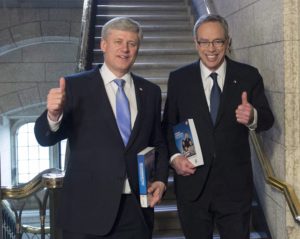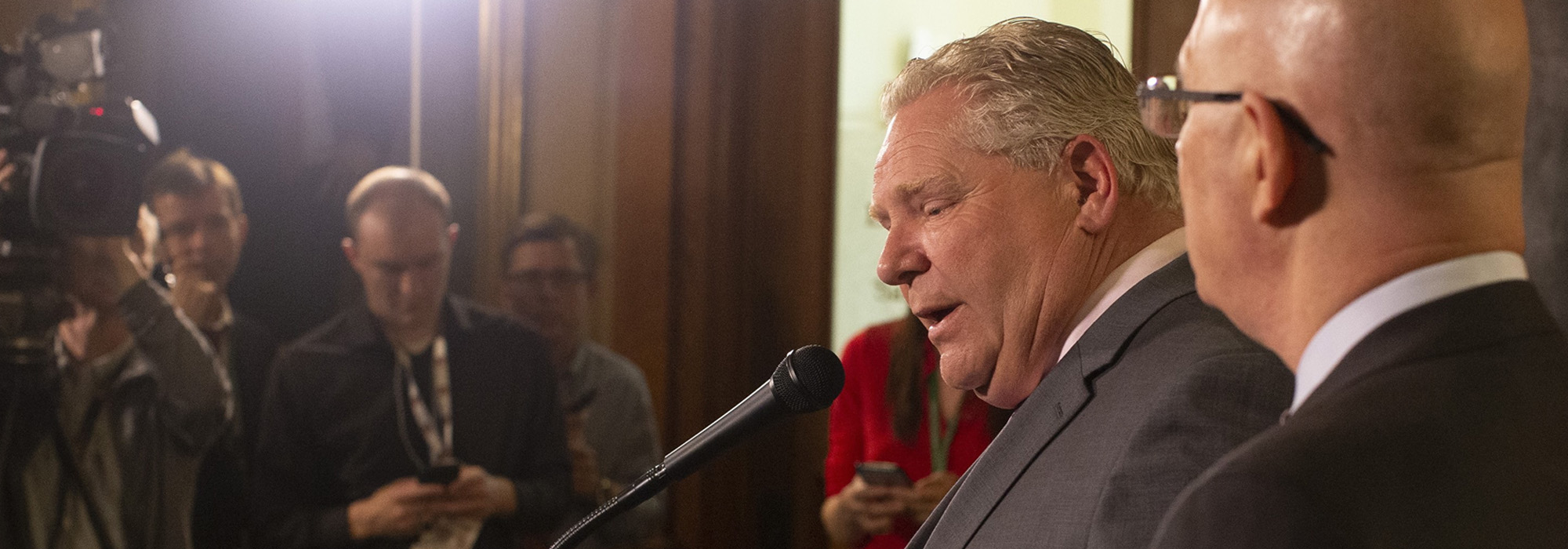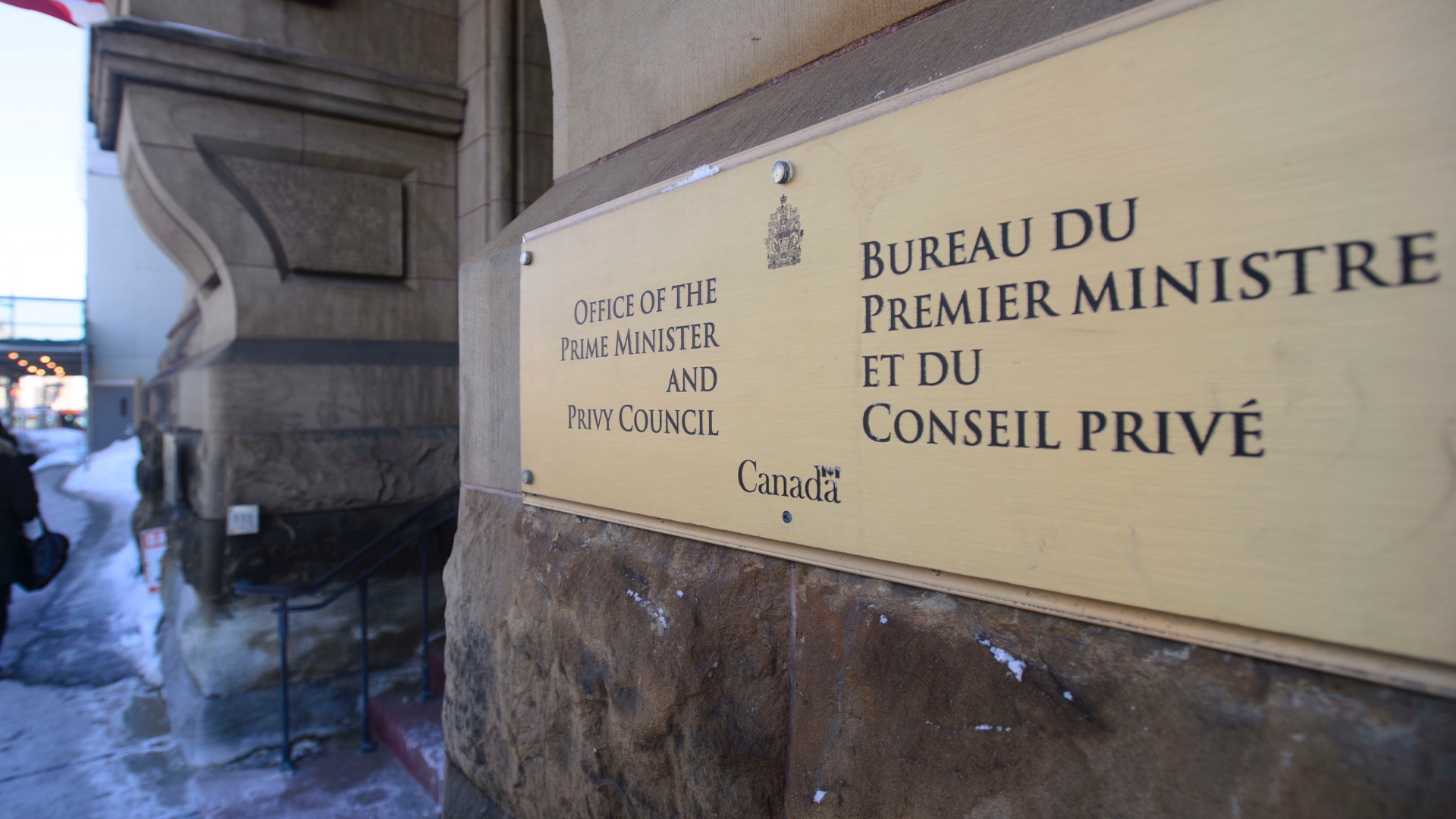
One of the hardest things about governing a country or a province or a city is the task of getting finances back in order after a period of deficit spending. There are a few reasons why a government spends beyond its means: a recession might necessitate a period of stimulus; targeted investments in economic infrastructure might be deemed advisable to produce a longer-term pay-off. Or, as happens all too often, a government might simply be incapable of saying no to the endless requests for new spending that cross the finance minister’s desk.
After the global financial crisis in 2008-09, the Harper government responded by unrolling a nearly $50 billion economic stimulus plan, and Canada emerged in notably better shape than its international peers. Just as importantly, it was one of the only countries to bend the deficit-spending curve back down again after the recession passed, returning to a balanced budget in 2015.
There is some debate over whether balanced budgets are truly necessary. I think they are because they provide a clear “fiscal anchor” for governments inundated with appeals for additional resources in priority areas. It is too easy otherwise for deficits to spiral out of control when no clear target exists, hurting a government’s capacity to respond to further downturns or pressures. Moreover, voters want to be generally assured there is a plan in place for careful management of their tax dollars, and that the government understands its ability to raise new revenue from taxpayers is limited.

If it’s important to live within one’s means – or at least adhere to a plan for responsible expenditure management – how does a government get back on track after a period of overspending? How does it avoid assigning an ever-greater percentage of its budget to interest payments on a growing debt burden? Not only are deficit-reduction exercises necessary to achieve this, they are a large part of the basis on which provincial governments have recently been elected in Ontario and Alberta.
The (political) problem is that any program or service reductions present a real vulnerability for governments, with political capital eaten up quickly by one or two unpopular decisions even when savings are minor. Messaging around “difficult decisions” is rarely well-received, even when a government’s finances are in objectively terrible shape. Spending reductions or reallocations are an easy target for opposition parties searching for material with which to pillory a government in daily Question Period. Political capital is also virtually impossible to gain once lost, which means that securing another mandate in the wake of a high-profile and controversial expenditure reduction exercise can be difficult.
The best recent case study, of course, is the Doug Ford government’s attempt to gain control of the Ontario provincial budget. There is no doubt that something needs to be done about Ontario’s finances. The province has experienced a long history of deficit budgets and debt accumulation, particularly in the years since 1990. It has the second-highest per-capita debt in the country, a debt-GDP ratio of nearly 41 percent, and the largest subnational debt in the world, growing at a rate of 4.3 percent per annum. It devotes more than $1 billion per month to interest payments on that debt.
However, despite outlining a moderate and gradual five-year plan to return to balance in its 2019 budget – for which it was roundly criticized by conservative commentators – the Ford government’s exercise in deficit reduction can charitably be termed a political disaster. In less than a year, it has earned a “slash-and-burn” reputation, which is unfair considering it is spending more money overall than the previous Liberal government, a fact lost amid the poor optics of specific program budget adjustments.
It is difficult to see how the Ford government will overcome it and execute successfully on its deficit-reduction plans. Already, decisions have been reversed in whole or part (on francophone services, public health budgets and even the Ottawa tulip festival) and program budgets have been increased markedly in response to criticism of seemingly ill-conceived policy changes (autism services, for example).
Important lessons can be learned from the Harper government’s efforts to return to balance after the 2008-09 recession, which I oversaw from the PMO side. Starting in 2011, the Harper government conducted a government-wide review of program and operational spending, with every department asked to present proposals to achieve 5 percent and 10 percent in savings for inclusion in the 2012 budget. The Deficit Reduction Action Plan (DRAP) was not perfect, but it did achieve $5.2 billion in ongoing savings with relatively minor political impact and contributed significantly to the government’s ability to balance the budget by 2015.
Relatively minor impact does not mean no impact, though. The closing of Vancouver’s Kitsilano Coast Guard station (net savings: less than $500K) attracted ongoing criticism in BC’s Lower Mainland and was subsequently reversed in a high-profile announcement by the Trudeau government. Closing of some standalone veterans’ service offices also proved politically damaging even though the offices saw little traffic and were co-located elsewhere with Service Canada.

What is particularly tricky for provinces is that they deliver services more directly than the federal government, and so spending reductions are likely to be much more visible and easily understood by voters.
Nevertheless, some useful lessons can be drawn from the federal exercise in 2011 and 2012:
1) Don’t outsource the exercise entirely. Expert panels can offer good and helpful advice from individuals who have no personal stake in maintaining the status quo, but panel members often do not understand the dynamics of a particular government, and they do not understand political realities. A successful expenditure-reduction exercise requires system buy-in by the bureaucracy and full participation by departmental overseers. At the federal level, the Harper government linked deputy-minister performance pay to successful execution of a particular department’s reduction targets. It also asked departments themselves to present an initial set of savings proposals, and then subsequent rounds of proposals if the first ones were deemed insufficient or non-viable.
2) Set up a cabinet committee or sub-committee to review and approve reduction proposals. At the ministerial and cabinet level, the Harper government’s review exercise was led by then-Treasury Board President Tony Clement. A cabinet committee was established, with backbench MPs added to the roster (an unusual move). We found that using a cabinet process reduced the risk of leaks, increased caucus involvement and support, minimized the direct link to the Prime Minister’s Office while proposals were under consideration, and worked with a structure well-understood and well-supported by the bureaucracy. The downside, of course, is that a formal cabinet process is much more cumbersome and time-consuming to manage.
3) Recognize that the time and resources needed to complete a cross-government exercise in a year or less are enormous. With other essential cabinet committee meetings occupying all of the available space and time in any given week – not to mention an active, ongoing legislative agenda in the House of Commons – the new committee tasked with undertaking deficit reduction work met late and worked long into the evenings. The time and energy required from departments and political offices over the course of nearly a year was enormous, and other priorities were inevitably set aside temporarily.
4) Ensure departments are focusing where they can on administrative efficiencies rather than service reductions. A significant portion of the $5.2 billion that the Harper government was able to book in ongoing savings was made up of back-room administrative efficiency measures. (Those opportunities are often only visible to system insiders rather than outside experts or consultants.) Departments were also asked to focus on value-for-money analysis of program spending to ensure any non-administrative reductions were backed up by sound policy rationale. This did not entirely prevent departments from putting forward politically difficult proposals in a strategic attempt to stave off budget reductions altogether. At the political level, we were prepared to see (and reject) potential proposals to shut down the RCMP Musical Ride, the Snowbirds or the country’s few remaining lighthouses. At the provincial level, similar complications abound, and any minor reductions in healthcare spending or child-focused programming can be particularly toxic.
5) Conduct a central political scrub of all approved proposals prior to finalization. Central review, with a political lens, of proposals approved by cabinet was a critical step for the Harper administration. It helped the government avoid a number of political landmines while ensuring the prime minister’s comfort with savings measures that he ultimately would have to defend. I put together a small team within the PMO to do this work over several weeks; it was a subset of the larger political team working on deficit reduction in ministers’ offices across government. What this exercise ultimately meant is that some departments contributed slightly more than 10 percent, while others (Indian and Northern Affairs, Veterans Affairs, for example) were largely ring-fenced and protected from reductions. Cabinet review provides a good level of political and policy oversight, but it is also important from my perspective to conduct a final bottom-line political scrub to ensure no “third rail” items – anything too controversial to tackle – have squeezed through. Of course, an assessment like this is necessarily subjective and must be balanced against the government’s primary need to identify savings.
6) Proper communication of savings measures is as important – or more – than the measures themselves. It is true that any budget efficiency measures must be carefully calibrated from a policy perspective. But even once that has occurred, given the high degree of political sensitivity involved in deficit-reduction exercises, communicating the well is essential. As part of the Harper government’s review, departments were asked to integrate communications lines and plans into their initial savings proposals; those plans were subsequently refined and expanded centrally as proposals were approved. Every measure was rolled up into Budget 2012 for scheduled release on budget day, using general thematic language to describe broad reduction “buckets.” We also organized stakeholder back-up wherever possible and assigned the best communicators in government to explain and defend decisions on budget day and following.
While that kind of high-level approach may not be as realistic at the provincial level, given the greater level of scrutiny involved in provincial service delivery, it is nevertheless advisable for governments to announce deficit reduction results as part of one package, and to release their strongest messaging up-front and proactively. Given the 24/7 media cycle, it is also advisable to consider establishing a war-room-style rapid response unit with immediate access to approved communications plans.
7) Do it early – ideally in the first year. It is always a good idea for governments to get difficult or potentially controversial initiatives out of the way in the first year or two. Early completion of a deficit-reduction exercise also allows the government to showcase an improved fiscal track and open up room for new spending in later years if necessary. That does not, however, mean there is room within a mandate to recover from a badly managed expenditure-review exercise. Some commentators have suggested the Ontario government would have been better off with a faster, more aggressive timeline for a balanced budget considering all the heat it has taken. In my view, that simply increases the likelihood of later course reversal, whether by a future government or the current one.
8) Systematize it so that ongoing value-for-money reviews become depoliticized. For four successive years at the federal level, the Harper government conducted annual strategic reviews of 1/4 of government spending through Treasury Board. Departments were invited to present proposals for program savings where usefulness or value-for-money could not be demonstrated. Savings could be harvested or reinvested in higher-performing programs or new initiatives. These reviews were not continued past the first cycle because they were replaced by the much-larger one-time DRAP exercise thanks to the government’s focus on balancing the budget post-recession. But they were tremendously helpful in exercising a degree of control over government spending and freeing up resources for political priorities. I’ve written more about the value of systematic spending review here.
Spending-review exercises will never be easy, but they will always be necessary – particularly so in an era of rapidly increasing government debt and a seeming inability by many political leaders to budget responsibly and explain necessary trade-offs. Ontario’s recent experience offers a cautionary lesson: governments get one chance to undertake large, cross-government expenditure-reduction exercises. It is critical that they get it right if Canada is to avoid the irreversible debt trap into which many of our global counterparts have descended.
Photo: Ontario Premier Doug Ford, left, stands with Steve Clark, Minister of Municipal Affairs and Housing outside his office in the Queen’s Park Legislature in Toronto as he takes questions after announcing the cancellation of retroactive cuts that have hit public health, child care and other municipal services, on May 27, 2019. THE CANADIAN PRESS/Chris Young
Do you have something to say about the article you just read? Be part of the Policy Options discussion, and send in your own submission. Here is a link on how to do it. | Souhaitez-vous réagir à cet article ? Joignez-vous aux débats d’Options politiques et soumettez-nous votre texte en suivant ces directives.







